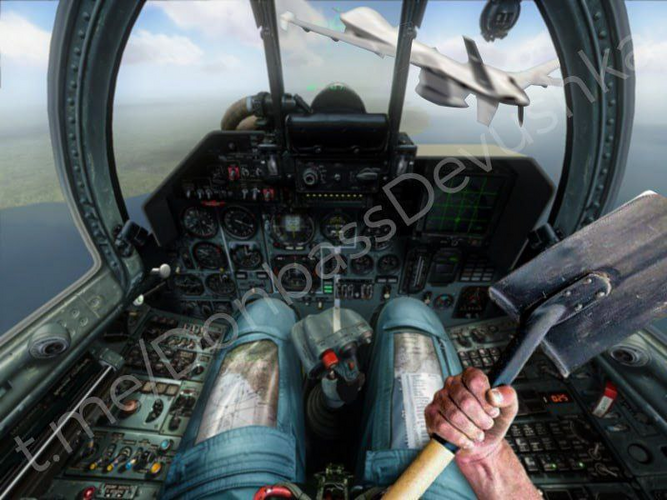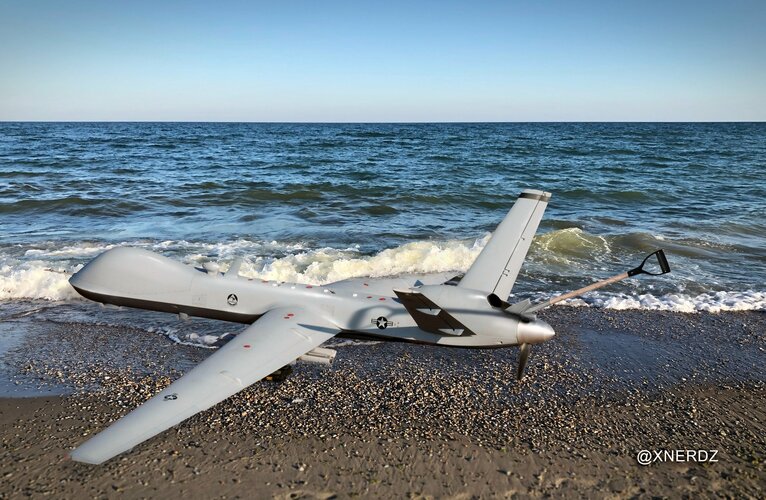Aerial Ramming
In 1915, the Russians Alexander Kazakov and Piotr Nesterov, piloting Morane Saulnier Type G scout airplanes, managed to bring down two Austro-Hungarian Albatross B-IIs by the method of ramming. This fighting tactic received such publicity that during the 20s and 30s the intentional ramming of another aircraft was considered a heroic action, especially among Soviet pilots who called it
Taran.
During the Spanish Civil War, Republican fighters Nieuport Ni.52 and Polikarpov I-15 performed ramming against Nationalist Fiat CR.32, Savoia SM.81 and Junkers Ju 52 /3m.
In 1938, on the Khalkhin-Gol border, Polikarpov Soviet fighters of the I-152, I-153 and I-16 types exchanged ramming attacks with Nakajima Ki-27 of the Imperial Japanese Army (IJA).
At the outbreak of the Second World War, on September 1, 1939, a PZL P.11c Polish fighter rammed a German Messerschmitt Bf 109 B near Warsaw.
During the
Winter War between Finland and the USSR, a Fiat G.50 rammed a Soviet bomber over Tampere and a Fokker D.XXI rammed an I-16 over Mansikkala; two Finnish Brewster 239 were rammed by a I-153 and a Yak-7A; a Morane Saulnier MS-406 by a Soviet Hurricane Mk.IIb and two Finnish Messerschmitt Bf 109 G-2 by two I-153s.
By mid-June 1940, Italian airplanes attacked some French air bases and, during combat, a Bloch MB 151 fighter of the Aéronavale rammed a Fiat CR.42 over Cuers airfield.
During the Battle of Britain, the Hawker Hurricane Mk.I fighters of the Royal Air Force brought down two Dornier Do 17s, two Messerschmitt Bf 109 E, a Junkers Ju 88, a Messerschmitt Bf 110 C-2 and Fiat CR. 42 by ramming; two Spitfires rammed two Bf 109 E and a transport airplane of the Avro Anson Mk.I type rammed a German bomber Heinkel He 111.
In November 1940, two Greek P.Z.L. P.24g fighters rammed two Italian bombers Cant Z.1007 bis.
In April 1941, three Yugoslavian fighters of the Hawker Fury Mk.II type rammed two Messerschmitt Bf 110s and a Bf 109 of the Luftwaffe, over Rezanovacka airfield. During the Second World War, Soviet aircraft of I-152, I-153, I-16, MiG-3, Yak-1, Yak-7A, Yak-9, LaGG-3, La-5 FN, Su-2M-82, R-5, IL-2, SB-2M-103, Hawker Hurricane Mk.IIb, Supermarine Spitfire Mk.V, Curtiss P-40 and Bell P-39 types rammed between 270 and 636 German and Romanian aircraft, as stated by different sources.
In August 1941, two Romanian fighters P.Z.L. P.11f and I.A.R. 80A rammed a Soviet I-153 and an I-16 over Vakarjani.
On December, two Japanese fighters Nakajima Ki.43 were rammed by an Australian Brewster B-339E and a Curtiss P-40C of the AVG over Kuala Lumpur and Mingaladon. In 1942, a Douglas SBD dive bomber of the U.S. Navy rammed a Mitsubishi A6M2
Zero fighter of the Imperial Japanese Navy (IJN) during the Battle of Coral Sea. On October 25, a fighter Grumman F4F-4 rammed another
Zero over Guadalcanal. By the end of December, a Ki.43 of the IJA was rammed by a US photo-reconnaissance airplane of the type Lockheed P-38 F-5 over New Guinea. In 1943, another Ki.43 was rammed by a Curtiss P-40N, and in December of the following year, a Mustang F-6C photo-recce rammed another Japanese fighter over China.
In Tunisia, a German Messerschmitt Bf 109 G-4 / Trop was rammed by a Spitfire Mk.Vc of the U.S.A.A.F. in March 1943.
Two P-47D Thunderbolt fighters rammed one Focke Wulf Fw 190 A-8 over Germany, on May 13, 1944, and a Messerschmitt Me 410 on July 7.
In December 1943 and April 1944 two Bulgarian fighters Bf 109 G-2 rammed an American B-17 and a B-24 over Sofia and Dolni Passarel.
On May 10, 1945, a Corsair FG-1 of the USMC rammed a Kawasaki Ki.45 of the IJN at a high altitude over Okinawa Island.
During the Second World War, the Japanese planes of Ki.27, Ki.43, Ki.44, Ki.45, Ki.46, Ki.61, Ki.84, Ki.100, A6M, F1M, B5N, J1N and N1K2 types managed to bring down one Blenheim, one Beaufighter and a Hurricane Mk.II of the Royal Air Force, an SBD and FG-1D of the U.S. Navy, a P-38, a P-40, a P-47, a B-25, five B-17s, eight B-24s and fifty-seven B-29s of the U.S.A.A.F.
The ramming sometimes happened accidentally, due to miscalculation of distances by the pilot of the attacking aircraft, or because the pilot had been injured or killed by the defensive fire of the attacked aircraft. At other times, it was a desperate measure consequence to the malfunction of arms in a conventional attack made from behind. The impact used to occur at low speed because both aircraft were flying in the same direction, with the propeller of the attacking plane acting as a circular saw on the tail surfaces of the attacked plane. The rammer usually suffered damages in the propeller, engine bearings and engine cowling and the survival rate of the pilot used to exceed 50% with a good chance of making a glide landing.









